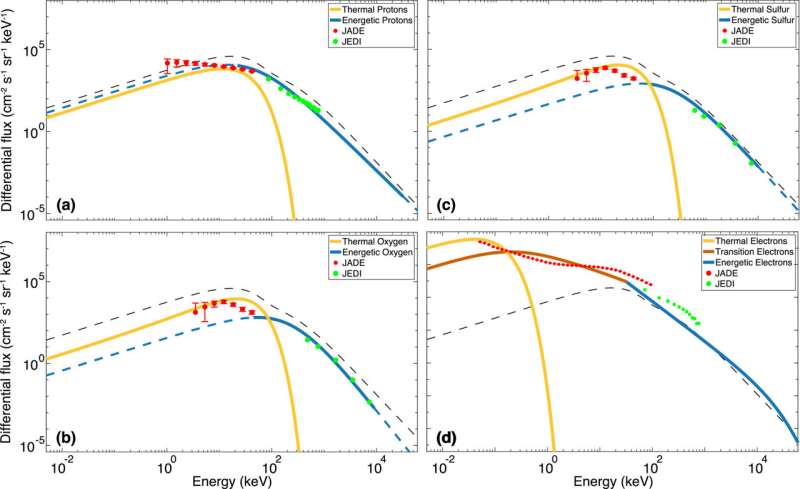September 18, 2023 report
This article has been reviewed according to Science X's editorial process and policies. Editors have highlighted the following attributes while ensuring the content's credibility:
fact-checked
peer-reviewed publication
trusted source
proofread
Jupiter's magnetosphere knocking molecules from ice on surface of Callisto does not explain amount of atmospheric oxygen

A team of scientists affiliated with several institutions in the U.S. has tested a theory created to explain the amount of oxygen in the atmosphere of Callisto, one of Jupiter's moons, and has found that it falls short. In their paper published in Journal of Geophysical Research: Planets, the group describes how they tested the theory and other possible avenues of research.
Callisto is second in size to Ganymede, Jupiter's largest moon. It is also the most heavily cratered. Callisto has become the object of more scrutiny recently due to the unexplained large amount of oxygen in its atmosphere.
Prior research has suggested that Callisto has a thick crust under which may lie an ocean, but its composition is still not clear—it might be crust with some ice, or mostly ice. It has also been known for some time that Callisto's atmosphere has a high percentage of oxygen. What has remained a mystery is how that oxygen got there, and why it persists. One primary theory to explain its presence is that Jupiter's powerful magnetosphere may be knocking loose molecules of hydrogen, water and oxygen from the ice on Callisto's surface. In this new effort, the researchers tested that theory.
The work involved simulating the thermal and energetic components of Jupiter's magnetosphere—specifically its plasma—and estimating the energy that would make it to Callisto's atmosphere and surface. Next, they calculated the amount of oxygen that that should be released based on that amount of exposure. They then compared the amount of oxygen that should be in Callisto's atmosphere (based on their calculations) with the amount that is actually there and found a massive discrepancy. There was much more oxygen in the atmosphere than could be explained by the influence of Jupiter's magnetosphere—by two or three orders of magnitude.
That leaves the origin of the oxygen a complete mystery. The research team suggests that more might be learned from upcoming missions such as the ESA's JUICE and NASAs Europa Clipper.
More information: Shane R. Carberry Mogan et al, Callisto's Atmosphere: The Oxygen Enigma, Journal of Geophysical Research: Planets (2023). DOI: 10.1029/2023JE007894
Journal information: Journal of Geophysical Research: Planets
© 2023 Science X Network





















